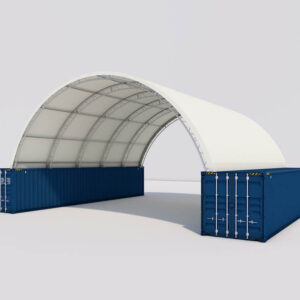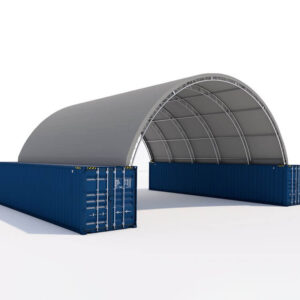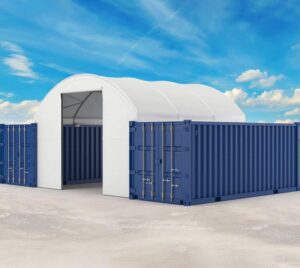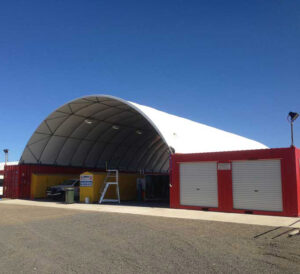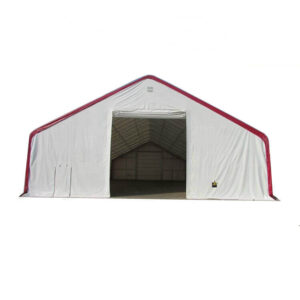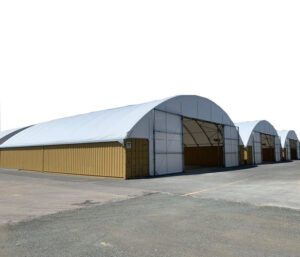Design Services

Shipping Containers as Storm Shelters: A Safe and Cost-Effective Solution
In regions prone to severe weather events such as hurricanes, tornadoes, and heavy storms, having a safe and reliable shelter is crucial. Shipping containers, traditionally used for transporting goods, have gained popularity as storm shelters due to their strength, durability, and affordability. This article explores the benefits, considerations, and best practices for using shipping containers as storm shelters.
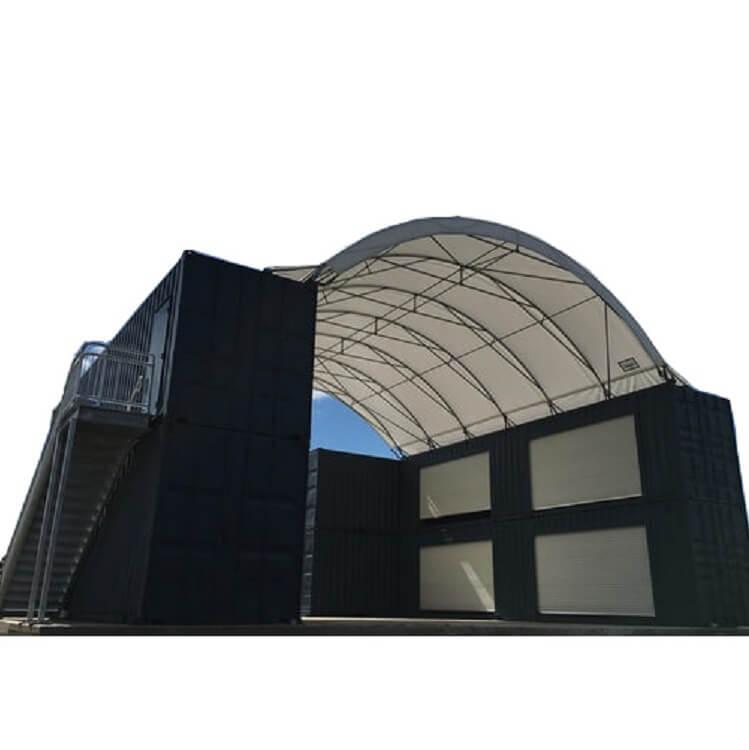
1. Why Use Shipping Containers as Storm Shelters?
Shipping containers are built to withstand harsh conditions, making them an ideal choice for use as storm shelters. The structural integrity of a shipping container, combined with its relatively low cost and availability, provides a practical and safe option for individuals and communities in storm-prone areas.
- 1.1 Durability and Strength
- Shipping containers are made from high-quality, weather-resistant corten steel, which is specifically designed to resist corrosion from salt and moisture. These containers are engineered to endure the rigors of long-distance shipping, including exposure to extreme winds and heavy loads. The robust steel frame can withstand hurricane-force winds, falling debris, and even potential flooding, making them one of the most resilient options for storm protection.
- 1.2 Compact and Space-Efficient
- Shipping containers come in standard sizes—typically 20 feet or 40 feet long—and are relatively easy to transport and install. Their compact design makes them suitable for small to medium-sized storm shelters, while their stackable nature allows for multi-container setups if additional space is needed. Whether placed in a backyard, on a property, or at a community level, shipping containers are adaptable to a wide range of site conditions.
- 1.3 Cost-Effectiveness
- Compared to traditional concrete or brick storm shelters, shipping containers are far more affordable. They are widely available in both new and used conditions, and their relatively low purchase cost and ease of modification make them a budget-friendly solution for those seeking storm protection. Additionally, many used shipping containers are available at a fraction of the price of new ones, making them an accessible option for many people.
2. How Shipping Containers Protect Against Storms
- 2.1 Wind Resistance
- Shipping containers are designed to endure significant forces during their transportation across the ocean. In the face of high winds, such as those from tornadoes or hurricanes, the steel construction and airtight seals of the container offer a high degree of protection. Containers can withstand winds exceeding 100 mph (160 km/h), which is the typical wind speed associated with severe thunderstorms and weaker hurricanes.
- 2.2 Impact Resistance
- In addition to high winds, storm shelters need to protect occupants from flying debris and falling objects. The steel construction of a shipping container makes it resistant to punctures and impacts from heavy debris, such as tree branches or roofing material. The thick walls offer an extra layer of protection that is not present in standard residential buildings.
- 2.3 Flood Protection
- Shipping containers are inherently water-resistant and can be placed above ground level to avoid flooding in areas prone to storm surges or heavy rainfall. In flood-prone regions, the container can be elevated on a foundation or a platform to ensure the shelter remains dry during and after a storm. For regions where flooding is a concern, shipping containers provide an added level of security by preventing water from entering the shelter.
3. Modifying Shipping Containers for Storm Shelter Use
While shipping containers are strong and durable, modifications are often necessary to enhance their functionality as storm shelters. Some of the key modifications include:
- 3.1 Reinforcement
- While shipping containers are strong, additional reinforcement may be needed depending on local building codes and the severity of potential storms. Adding steel reinforcements, such as extra beams or welded steel plates, can improve the shelter’s resistance to extreme wind speeds and impacts. It’s essential to ensure that the container is securely anchored to the ground or foundation to prevent it from being displaced during high winds.
- 3.2 Ventilation and Airflow
- Shipping containers are airtight, which is great for protecting against wind and water but can lead to ventilation issues. Proper airflow is critical to ensure breathable air inside the shelter, especially during prolonged storms. Ventilation holes or passive ventilation systems can be installed to allow air circulation without compromising the structural integrity of the container. Small, secure air vents placed near the top of the container can ensure fresh air while keeping debris out.
- 3.3 Insulation and Comfort
- To make a shipping container more comfortable for long periods of use, insulation is important to regulate temperature and reduce condensation. Insulating the walls, ceiling, and floor of the container with spray foam or foam board insulation will help maintain a stable temperature inside the shelter. Insulation also helps to reduce the noise from the storm outside and prevents condensation that can occur in humid conditions.
- 3.4 Doors and Entry Points
- The standard door on a shipping container is a large, heavy-duty cargo door that may not be ideal in all storm conditions. For storm shelters, consider installing a reinforced storm door or adding additional locking mechanisms to improve security. In some cases, it may be beneficial to install a secondary escape hatch to provide an alternative exit if the primary door becomes blocked or obstructed.
4. Location and Placement of the Storm Shelter
- The location of the shipping container storm shelter is crucial to its effectiveness:
- Above Ground: While shipping containers can withstand some flooding, placing the shelter on an elevated platform is often necessary in flood-prone areas.
- Site Selection: Choose a location that is accessible, but also shielded from potential hazards such as trees that may fall during the storm. Ideally, the shelter should be positioned in a spot that provides quick access but avoids direct exposure to flying debris or flooding.
- Community Shelters: In communities prone to severe storms, shipping containers can be repurposed into shared shelters for residents. These shelters can be pre-positioned in safe areas and equipped with essential supplies.
5. Legal Considerations and Building Codes
Before installing a shipping container as a storm shelter, it is important to check local building codes and regulations. Depending on your region, the installation of a shipping container may require zoning permits, especially if it’s being used as a permanent or semi-permanent structure. Ensure the modifications meet local safety standards and that the shelter complies with regulations concerning structural integrity, ventilation, and egress.
6. Conclusion
Shipping containers offer a practical, affordable, and resilient solution for storm shelters. Their strength, portability, and weather resistance make them an excellent option for protecting families and communities from the dangers of severe weather events. With proper modifications for ventilation, comfort, and safety, a shipping container can provide a secure, life-saving refuge during storms, floods, and even tornadoes. As natural disasters become more frequent and intense, shipping containers offer a viable, sustainable way to safeguard against the unpredictability of Mother Nature.



